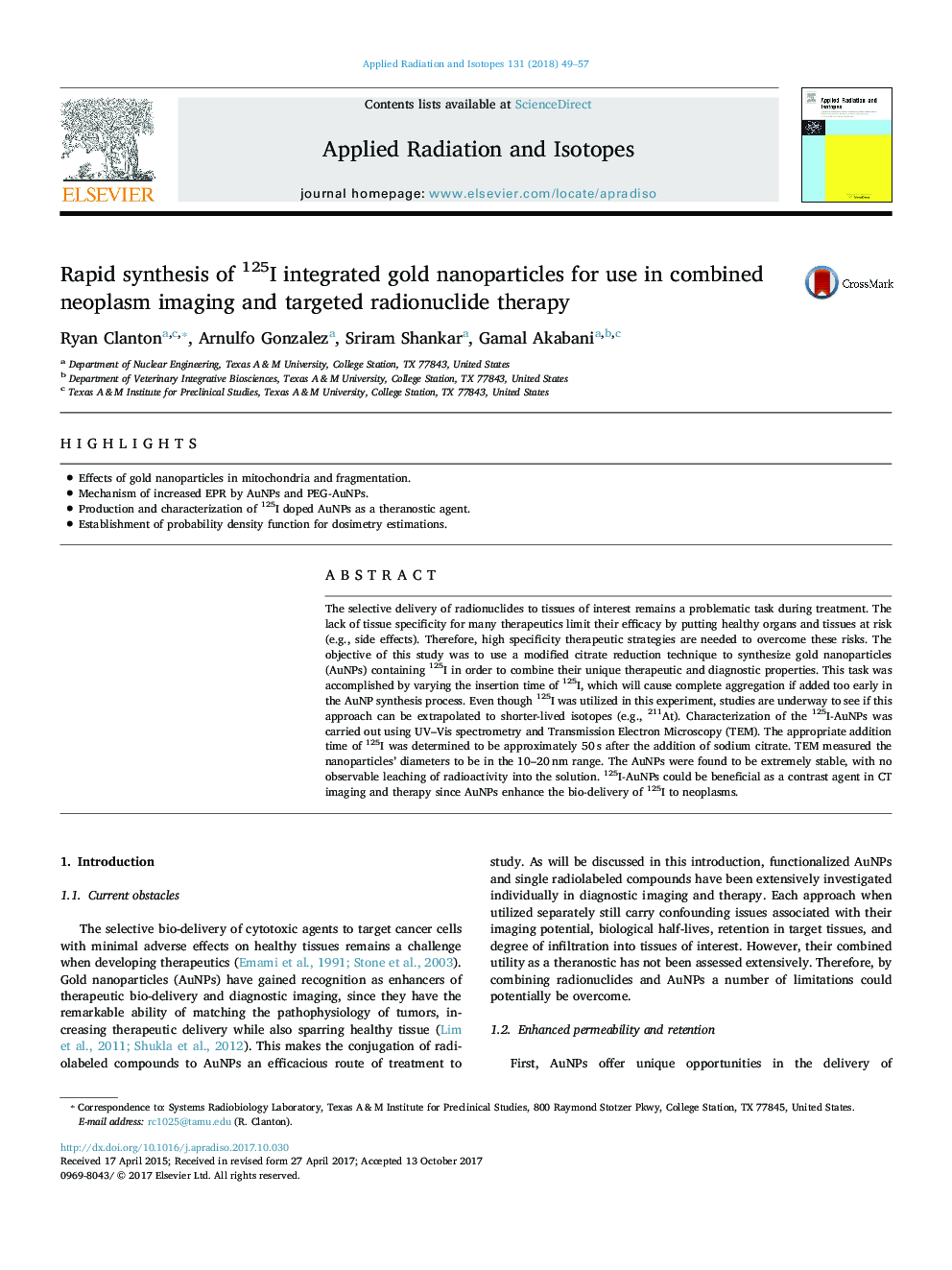| Article ID | Journal | Published Year | Pages | File Type |
|---|---|---|---|---|
| 8208796 | Applied Radiation and Isotopes | 2018 | 9 Pages |
Abstract
The selective delivery of radionuclides to tissues of interest remains a problematic task during treatment. The lack of tissue specificity for many therapeutics limit their efficacy by putting healthy organs and tissues at risk (e.g., side effects). Therefore, high specificity therapeutic strategies are needed to overcome these risks. The objective of this study was to use a modified citrate reduction technique to synthesize gold nanoparticles (AuNPs) containing 125I in order to combine their unique therapeutic and diagnostic properties. This task was accomplished by varying the insertion time of 125I, which will cause complete aggregation if added too early in the AuNP synthesis process. Even though 125I was utilized in this experiment, studies are underway to see if this approach can be extrapolated to shorter-lived isotopes (e.g., 211At). Characterization of the 125I-AuNPs was carried out using UV-Vis spectrometry and Transmission Electron Microscopy (TEM). The appropriate addition time of 125I was determined to be approximately 50Â s after the addition of sodium citrate. TEMÂ measured the nanoparticles' diameters to be in the 10-20Â nm range. The AuNPs were found to be extremely stable, with no observable leaching of radioactivity into the solution. 125I-AuNPs could be beneficial as a contrast agent in CT imaging and therapy since AuNPs enhance the bio-delivery of 125I to neoplasms.
Related Topics
Physical Sciences and Engineering
Physics and Astronomy
Radiation
Authors
Ryan Clanton, Arnulfo Gonzalez, Sriram Shankar, Gamal Akabani,
